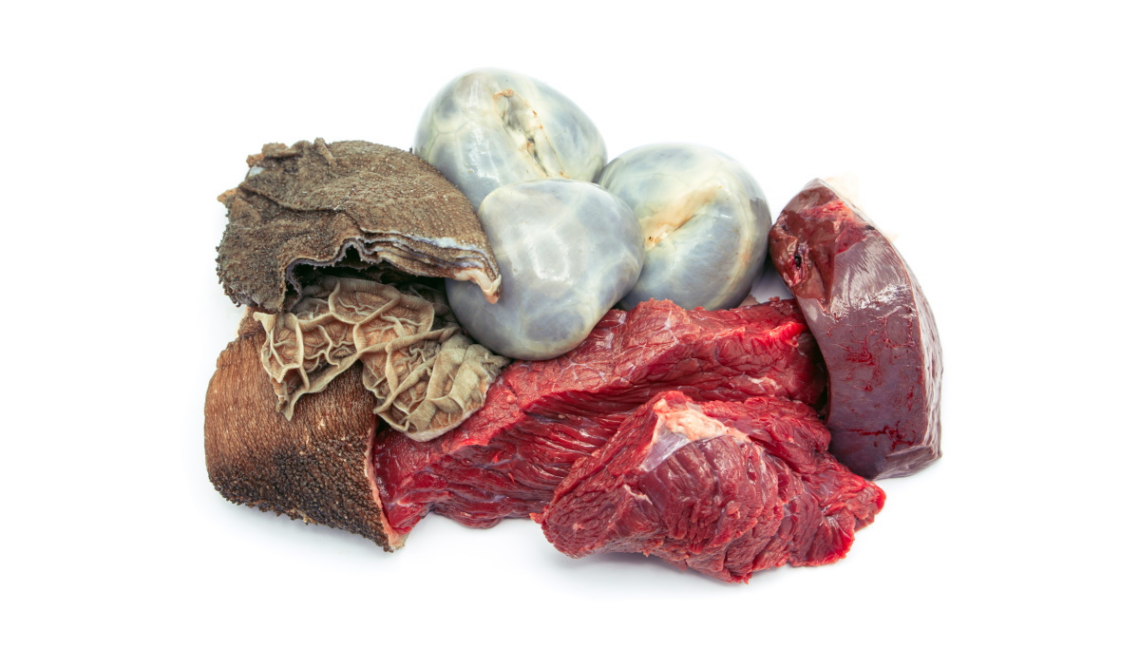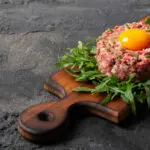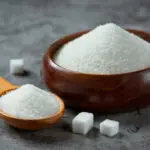Healthy Delectable Food for Cats and Dogs!
When we think of organ meat, most of us scoff at the thought of offal and / or meat by-products. In our current convenience society, traditional dishes are no longer served – such as tripe – and as a result, pet parents no longer consume organ meat as part of our primary diet. However, for our pets, organ meat is not only good, but it also very beneficial to their health.
With our current farming methods, meat and bone can be lacking in many important nutrients as well. Therefore it is important to food your masters, muggles, mutts, pups and nobles all the organs and all the parts of an animal that they would eat, had they tracked and killed that animal in the wild, when you make your own meals. Or alternatively, use herbs as a natural substitute. Dogs are after all facultative carnivores. Organs are also good as treats and top-ups with full meals.
Of course, our mutts, pups and nobles no longer hunt. As facultative carnivores, it means they should be eat meat, real animal protein. Dogs are also opportunistic scavengers and have been since the beginning of their species. If not hunting, a dog in the wild could find a dead animal carcass and will scavenge all sorts of things including meat, bone, stomach contents, and organ (offal). In fact, the species dog often goes for the soft meaty bits and organs first. They may do this because they are easily accessible, but it could also be because the organ meat provides some of highest levels of essential nutrients for the dog.
Organ meat provides several natural essential B vitamins including B12, B1, B2, B5, B6, as well as biotin and choline. It also contains natural Vitamin A, C, D, E, and K as well as omega fatty acids and minerals. All these vitamins offer the optimal nutrition for mutts, pups and nobles. Perhaps most importantly, organ meat is a wonderful source of protein.
Some raw fooding philosophies call for 5% of the diet to be liver and 5% of the diet to be other secreting organ(s). However, balance over time is the driving principle when considering real food diets, and as such, organ does not have to form part of the daily allowance. Our observation and recommendation are that the 5% / 5% rule is not foolproof, and just because you feed 5% liver, 5% other organ does not mean you are not feeding an excess or deficiency of certain nutrients. Balance over time.
As a reminder:
| Feed as Organ | Feed as Meat |
|---|---|
| Liver | Heart |
| Kidney | Gizzards |
| Spleen | Tongue |
| Brain and Sweetbreads | Lung and Trachea |
| Testicles | Tripe |
Let us look at the different organ meats and what they can provide as part of the diet.
- Heart – selenium, zinc, thiamine, co-enzyme Q10, phosphorus, folate and B vitamins;
- Liver – vitamin A, iron, copper, co-enzyme Q10, B vitamins and folic acid;
- Brain – DHA, vitamin B12, vitamin A, phosphorus, potassium, selenium and calcium;
- Kidneys – Vitamin B12, B6, iron, riboflavin, niacin and folate;
- Pancreas – Vitamin C, thiamine, folate, niacin, calcium, iron, magnesium and selenium;
- Thymus – Vitamin C, B vitamins, magnesium, calcium, phosphorus and selenium;
- Tripe – folate, choline, potassium, calcium, magnesium, phosphorus and selenium;
- Tongue – B vitamins, vitamin C, potassium, phosphorus, selenium, zinc, calcium and iron;
- Lungs – vitamin A, C and B, potassium, phosphorus, selenium, magnesium, iron and calcium;
- Testicles – potassium and iron.
Liver as part of the diet
Liver is rich in many different vitamins and fatty acids. One of the most notable differences between liver and other organs is the vitamin A content. Liver is jam packed with vitamin A, while other organs are not. Vitamin A is one of only two vitamins which are possible to overdose on if given in excessive quantities, and vitamin A toxicosis can cause severe health issues.
However, before sparking a panic, the toxicity level of vitamin A is extremely high, and you would need to feed excessive liver for months or even years before the dog began to show symptoms of vitamin A toxicity. Still, it is very easy to end up with an extremely high amount of vitamin A when feeding liver as the entire 10% organ content.
Occasionally including liver in the diet promotes health for the digestive system and the coat, as well as essential vitamin content needed to sustain health overall. Or perhaps via treats!
Kidney as part of the diet
Like liver, kidneys provider a wide range of vitamins:
- Vitamin A
- Vitamin E
- Vitamin K
- Vitamin B12
- Iron
- Zinc
Kidney provides some similar benefits as liver, but with the added benefit of vitamins like zinc and iron. Kidney is also a great source of essential fatty acids which can help maintain a healthy skin and coat, and digestive system.
Benefits of Adding Organ Meats to the diet
Adding organ meats to your own and your pets’ diet has several benefits:
- Excellent source of iron: Meat contains heme iron, which is highly bio-available, so it’s better absorbed by the body than non-heme iron from plant foods.
- Keeps you fuller for longer: Many studies have shown that high-protein diets can reduce appetite and increase feelings of fullness. They may also promote weight loss by increasing your metabolic rate.
- May help retain muscle mass: Organ meats are a source of high-quality protein, which is important for building and retaining muscle mass.
- Great source of choline: Organ meats are among the world’s best sources of choline, which is an essential nutrient for brain, muscle and liver health that many people don’t get enough of.
When not to feed organ meat?
There are some medical conditions that require a specific diet, and organ meat would not be appropriate for mutts, pups and nobles with those conditions.
If your dog is not eating organ meat, you must supplement the diet to make up for the nutrients that organ meat would otherwise provide in a raw diet, otherwise, the diet will be severely deficient in many important vitamins and minerals. The nutrients you will have to supplement and in what quantities will depend on your dogs condition and what the rest of the diet consists of.
Kidney disease
Organ meat is very high in phosphorus, which means it is not appropriate for dogs with kidney disease because damaged kidneys do not efficiently metabolize phosphorus. This will result in high phosphorus in the blood, which can cause calcium to be pulled from the bones.
Hyperuricosuria
Dalmatians with hyperuricosuria, a genetic condition that affects the metabolism of protein waste products, should avoid foods high in purines. This is because their condition prohibits the body from properly breaking down purines into uric acid and then into allantoin, resulting in a build-up of uric acid waste products, which can cause urate stones. Urate stones can form urinary blockages; they are very painful and can even result in death if not treated. Since organ meat is high in purines, Dalmatians with this condition should generally not be fed organ meats.
Copper storage hepatopathy
Liver is also high in copper, thus dogs with copper storage liver disease should not be fed liver because of their accumulation of copper in the liver. However, there are low copper organ meat choices which may be able to be fed sparingly (and careful measurement), such as chicken liver, turkey liver, or pork liver. Beef liver, duck liver, and lamb liver all contain high levels of copper and should be avoided completely.
What have we learned?
In summary, before spending money on supplements, make sure you try whole foods first for your pack. They may prove to be the solution your mutts, pups and nobles needs. If whole foods do not provide enough support, then find the best herbal or organ supplement for your pack.





